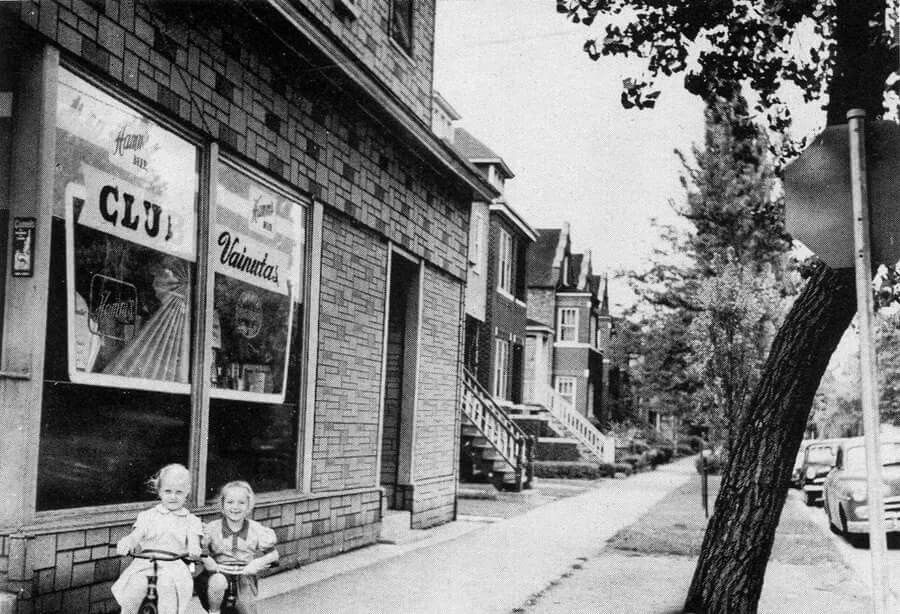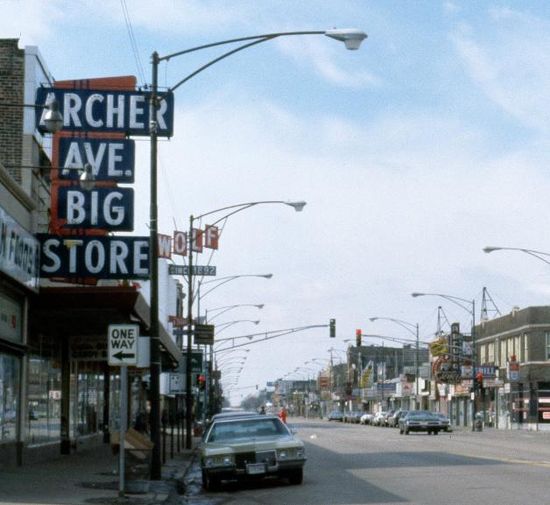Brighton Park in Chicago
Brighton Park, located on the southwest side of Chicago, Illinois, is a neighborhood with a rich history and a vibrant community. As the 58th community area of Chicago, Brighton Park has been shaped by its diverse population, transportation infrastructure, and industrial development. In this article, we will explore the history, transportation, government, education, and notable aspects of Brighton Park, showcasing its unique character and contributions to the city of Chicago.
History
The history of Brighton Park dates back to the 19th century, when the land was platted and subdivided in anticipation of the opening of the Illinois and Michigan Canal. The area was named after the Brighton livestock market in England, and it quickly became a center of commerce. In 1851, Brighton Park was incorporated as a municipality, attracting settlers with the promise of economic opportunities.
During the late 1850s, Brighton Park became a prominent livestock trading center, with a stockyard established at the corner of Archer and Western Streets. The completion of the Union Stock Yard in 1865 led to the decline of Brighton Park’s yards, but the neighborhood continued to attract various industries such as the Northwestern Horse Nail Company, a cotton mill, and the Laflin and Rand Company, known for manufacturing explosives.

In the late 19th and early 20th centuries, Brighton Park experienced a wave of immigration, with European immigrants, including Germans, Irish, Poles, Lithuanians, and Italians, settling in the community. These diverse populations brought their unique cultural traditions, which were reflected in the establishment of churches such as the Brighton Park Baptist Church, McKinley Park Methodist Church, St. Agnes Church, and St. Jean Baptiste Church.
Transportation
The role of transportation has been integral to Brighton Park’s development and economy. The community’s location near major transportation arteries, such as the Illinois and Michigan Canal and Archer Avenue, attracted early settlers and facilitated the growth of industries. The Chicago & Alton Railroad established a roundhouse in Brighton Park, while the Santa Fe Railroad built its Corwith Yards in the neighborhood, becoming one of the busiest in the nation.
The opening of the Stevenson Expressway (Interstate 55) in 1964 and the Orange Line rapid transit line in 1993 further enhanced access to Brighton Park. These transportation improvements, along with the revitalization of the nearby Midway International Airport, have contributed to the neighborhood’s connectivity and economic growth.
Government and Infrastructure
The neighborhood is part of the city of Chicago and falls under the jurisdiction of the Chicago Park District. The neighborhood is served by the Brighton Park branch of the Chicago Public Library, located on South Archer Avenue. The United States Postal Service operates the Elsdon Post Office, which previously served the community.
Education
Education plays a crucial role in the neighborhood, with several public and charter schools serving the neighborhood. Chicago Public Schools operates schools such as Burroughs School, CPS Brighton Park School, Calmeca Academy, Columbia Explorers School, N. Davis School, Gunsaulus Scholastic Academy, Shields Elementary, and Shields Middle School. The Acero Charter School Network also operates schools in Brighton Park, including the Sandra Cisneros School, Acero Brighton Park School, and the Officer Donald J. Marquez School.
Community and Culture
Brighton Park’s community is known for its strong cultural identity and vibrant celebrations. The neighborhood is home to the Balzekas Museum of Lithuanian Culture and the Polish Highlander Alliance, which preserve and showcase the heritage and traditions of Lithuanian and Polish communities, respectively. These institutions serve as cultural landmarks and contribute to the neighborhood’s unique character.
Demographics and Diversity

Brighton Park is a diverse community, with a population that has evolved over time. According to the U.S. Census, as of 2020, the neighborhood had a total population of 45,053. The demographic makeup of the area includes a variety of ethnic backgrounds, with 6.8% White, 1.2% Black, 80.9% Hispanic, 10.2% Asian, and 0.9% other races. The neighborhood’s demographics reflect its history of immigration and cultural diversity.
Economic Development
Brighton Park has experienced economic ups and downs throughout its history. The neighborhood was once a hub of industrial activity, with factories and manufacturing plants providing employment opportunities. However, deindustrialization in the late 20th century, exemplified by the closing of Crane Manufacturing Company in 1977, led to a decline in the area’s economy.
In recent years, the neighborhood has seen a resurgence in economic development. The community has witnessed the growth of a commercial sector, contributing to job creation and the revitalization of local businesses. The neighborhood’s proximity to major transportation routes continues to attract investment and foster economic growth.
Notable Individuals
Brighton Park has been home to several notable individuals throughout its history. One such individual is Edward J. Moskala, a World War II veteran who was awarded the Medal of Honor for his actions during the Battle of Okinawa. Moskala resided in the area at the time of his enlistment and is remembered for his bravery and service.
Future Development and Outlook
As Brighton Park continues to evolve, the community remains committed to preserving its cultural heritage and fostering growth. Efforts are underway to support small businesses, improve infrastructure, and enhance quality of life for residents. With its rich history, diverse population, and ongoing revitalization efforts, the neigborhood is poised for a bright future as a dynamic and welcoming neighborhood in Chicago.
Brighton Park, located on the southwest side of Chicago, is a community area with a fascinating history and a vibrant present. From its early days as a livestock trading center to its diverse immigrant population, the neighborhood has evolved and adapted to changing times. Today, the area continues to grow and thrive, with a strong sense of community, rich cultural traditions, and ongoing efforts to promote economic development and enhance quality of life. This unique neighborhood is a testament to the resilience and spirit of its residents, making it a truly special place within the city of Chicago.


